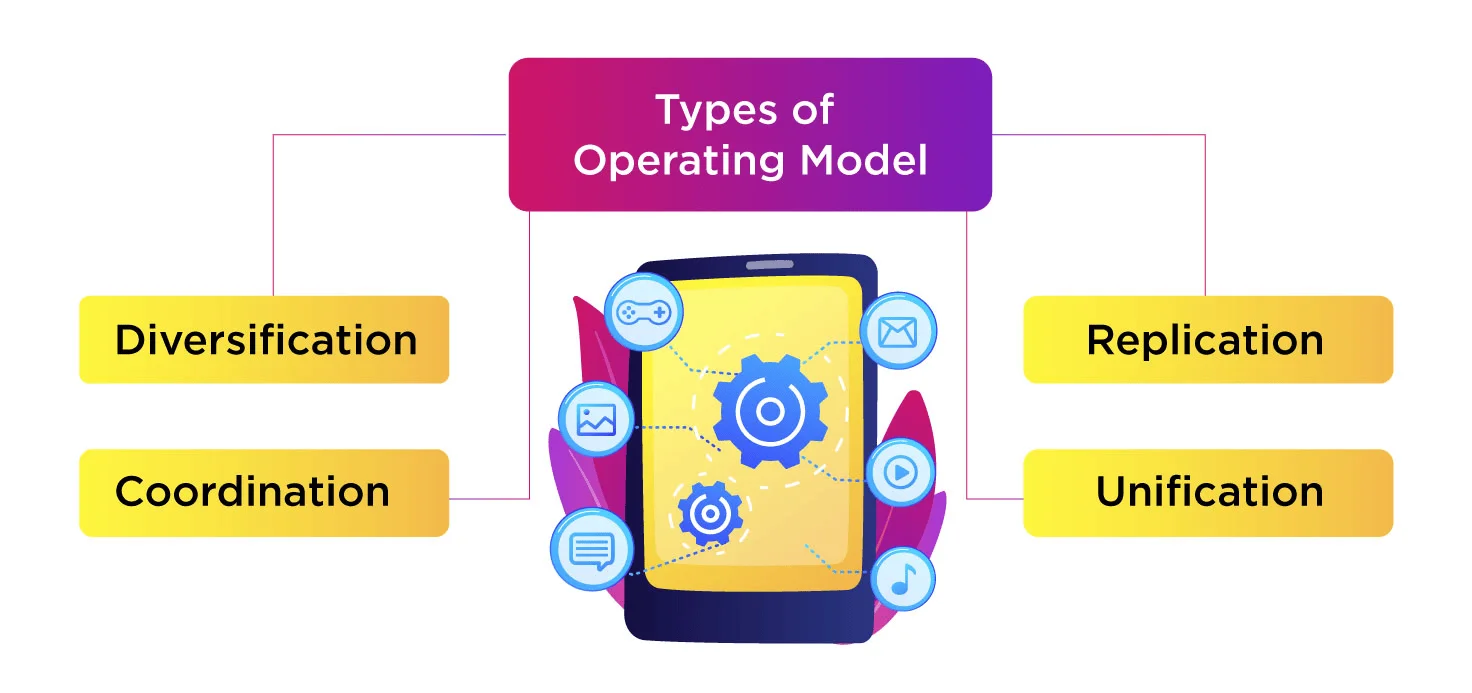Businesses follow a complex process to function which is often hard to understand for their internal and external stakeholders. To address such difficulties, companies usually integrate operating models. The method allows for the representation of organizational functionalities visually and virtually.
Creating operating blueprints or models enables companies to understand how different functions and areas contribute to achieving their organizational goals. Alongside that, the method also lets customers of different demographics comprehend a business model distinctly. Such models may include insights into a company’s operations, governance, services, marketing, IT, sales, and other components.
This blog shall revolve around operating models, their types, impact on business, and their benefits. Let’s dive in...
What is an Operating Model?
Operating models are nothing but visual representations of the business plans of a company. Organizations create such models to offer their internal and external shareholders a vivid illustration of their goals, activities, and success rate. Operating blueprints work as an asset that circulates value to the employees and business partners of a company.
In simple terms, operating models generally showcase how companies operate. Businesses usually create different operating blueprints of separate departments or create a combined model, aiming to bring agility to operations. The approach generally depends on the size and type of the company.
Though people often get confused between operating and business models, both terms bear diverse significance within a commercial setup. A business model showcases the commercial processes of an organization. However, in an operating model, commercial activities are a segment aside from operations, IT, governance, and others.
Types of Operating Model:
There are four broad types of operating models, according to the set of theorists and scientists- Jeanne W. Ross, Peter Weill, and David C. Robertson. They mentioned these classifications in their book titled “Enterprise Architecture as Strategy: Creating a Foundation for Business Execution.”
Diversification:
With low integration and standardization, this model focuses on separately depicting different operations. Therefore, it highlights how different departments of a company function in a diversified way.
Coordination:
Coordination models depict how different units and departments of an organization are interconnected irrespective of their functions and responsibilities. Coordination seeks high integration and minimal standardization.
Unification:
This operating model relies on the belief that business processes are highly connected, and companies efficiently function when their activities are unified. It requires high standardization and integration.
Replication:
This operating model also focuses on different functionalities of diverse departments of an organization but with high standardization.
Impact on Business:
Operating blueprints or models aim to assess business functionalities to evaluate whether the set goals have been met or not. Companies can easily determine their strategies and effectively execute them after integrating such models. Additionally, having an appropriate structure of business operations enables companies to bring efficiency to their tasks. Therefore, it is crucial for companies to have an operating plan. Let us discuss the key benefits of operating models in business:
Flexibility and adaptability:
While running a business, it is important to stay flexible and adaptable, considering the diverse requirements of the prospects. Operating blueprints allow companies to overlook what has been done so far while functioning in an industry and what changes can be initiated. The method eliminates hurdles in business operations, sustaining agility.
Cost and risk management:
Operating models can be remarkably significant in the cost and risk management of organizations, enabling efficient resource allocation for each task. Moreover, the method makes it easier to identify critical activities that require an appropriate approach and additional effort to execute.
Impactful Engagement with employees and stakeholders:
Visual depiction of business activities through operating models allows companies to engage with their employees and stakeholders. It provides a better understanding of the organizational structure and each task.
High productivity and efficiency:
With a better comprehension of the business proceedings and units, companies can boost productivity. Furthermore, strategic risk management also contributes to the efficient execution of strategies.
Concluding Remarks!
Operating models are crucial for business advancement. These models generally include management structures, resource details, business models, capabilities, strategies, involved people, IT elements, and others. These aspects contribute to the formation of operating blueprints in a combined way that empowers companies to stay agility and progress.
Was the blog informative? If so, then read our other in-depth blogs.
Read More:
Network Virtualization in Business: Top Advantages and Challenges






